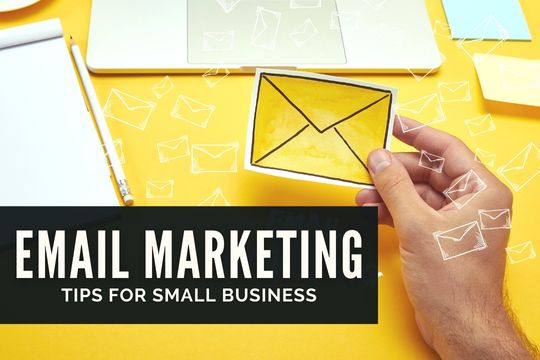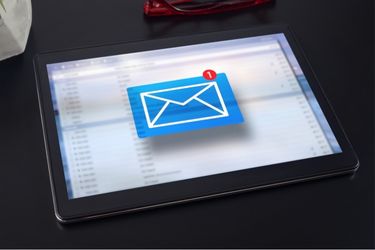
As a small business owner, you're always looking for new ways to grow your business. Email marketing is a great way to reach out to your customers and promote your products or services. However, it can also be tricky when you're just starting. Here are 15 email marketing tips for small business owners to help you get the most out of your email campaigns.
Before you can start emailing your audience, you must build up a list of email addresses. One of the most effective ways to do this is to add a sign-up form to your website. This allows visitors to opt-in to your email list so they can start receiving your emails. You can also encourage people to sign up for your email list by offering a freebie or discount for subscribing.
Feel free to be creative about how you build your list. Just ensure you're getting permission from people before you start emailing them. You should avoid purchasing email lists, which can result in high bounce rates and a damaged reputation.

Once you have a sizeable email list, it's important to segment it, so you're only sending relevant information to each subscriber. Segmentation is the process of dividing your email list into smaller groups based on criteria like geographical location, age, gender, interests, etc. You can segment your list based on how each subscriber engages with your emails.
This allows you to personalize your emails more likely to be opened and clicked. It also helps to avoid email fatigue, which is when subscribers start ignoring or even deleting your emails because they're not relevant to them.
Most people are bombarded with emails daily, so you'll want to make yours stand out. Keep your email content concise so people can easily read and digest it. If you have lots of information to share, consider breaking it up into smaller emails or even using an email series.
It's also important to use attractive visuals in your email to grab people's attention. Consider using images, infographics, or even video content to make your email more engaging.

Every email you send should have a specific purpose. Whether you're trying to promote a new product, drive traffic to your website's landing pages, or stay in touch with your subscribers, ensure each email has a clear goal. This will help you to create email content that is relevant and useful to your audience.
If you're unsure what goal to focus on, think about what action you want your email recipients to take after reading your email. Once you have this goal in mind, it will be easier to create email content that helps you to achieve it.
Delivering value with each email is the best way to keep your subscribers engaged. This could mean providing helpful tips and resources, sharing exclusive deals and discounts, or simply sending engaging and entertaining content. Even if you're sending an obvious promotion email designed to increase sales, keeping it relevant and useful to your audience will result in better engagement rates.
A content strategy can help you to plan and create email content that is valuable to your audience. If you're unsure what kind of content your subscribers will find valuable, ask them! You can send out a survey or poll to get feedback on what type of content they would like to receive.
Your email's subject line is one of the most influential elements in getting people to open and read your email. Ensure your subject lines are clear, concise, and to the point. You should also avoid using generic phrases like "newsletter" or "monthly update."
In addition to being clear and concise, your subject line should be interesting and engaging. If you can make people curious about what's inside your email, they're more likely to open it. One effective method is to appeal to FOMO (fear of missing out) by using phrases like "you won't want to miss this."

Your email's call-to-action (CTA) is what you want your subscribers to do after reading your email, and every email should have one relevant to the email's content and goal. For example, if you're promoting a new product, your CTA should be something like "learn more about our new product." If you're trying to drive traffic to landing pages on your website, your CTA could be "visit our website to learn more."
Where you should place your CTA depends on what you're trying to achieve. If you want people to click through to your website, put your CTA at the top of the email, so it's one of the first things they see. If you're trying to encourage users to download a PDF or sign up for a webinar, put your CTA near the bottom of the email, so they have all the information they need to make a decision.
With an ever-expanding number of people reading emails on their smartphones, making sure your email designs are mobile-responsive is vital. Your email will be easily read on any device, whether a phone, tablet, or computer.
If you're unsure if your email design is mobile-responsive, send a test email to yourself and open it on your phone. If you have to zoom in or scroll horizontally to read the email, it's not mobile-responsive.
The moment you send an email is just the beginning. To ensure your email marketing campaigns are successful, you need to track their performance and analyze the data. This will help you to determine which email marketing strategies are most and least effective, allowing you to pivot your efforts when necessary.
You should track a few key metrics for each email campaign, including open rate, click-through rate, unsubscribe rate, and bounces. You can track these metrics using email marketing software.

Successful email marketing is all about consistency. Your subscribers should know what to expect from your emails, whether it's weekly updates, monthly newsletters, or promotional offers. Consider creating an email marketing schedule to help you stay on track.
You should also keep your email designs consistent. This means using the same branding, colors, and overall look and feel in all of your email campaigns. This will help people recognize your emails, even if they're unfamiliar with your brand. Using email templates can be a helpful way to maintain design consistency.
While consistency is the key to success, that doesn't mean you should be sending out emails just for the sake of it. It's more important to focus on quality over quantity. This means sending interesting, engaging, and relevant emails to your subscribers at a moderate frequency.
It's better to send out a handful of high-quality email campaigns per month than to send out a dozen email campaigns that are quickly forgotten. This will help you to build a stronger relationship with your subscribers and keep them engaged over time.
Once you've laid out a reasonable email marketing schedule and confidence in your ability to stick to it, you can start automating your email campaigns. This means setting up email drip campaigns that will send out your emails on a pre-determined schedule.
Automated email campaigns can be a great way to stay consistent with your email marketing while freeing up your time to focus on other tasks. It can also help segment your email list and send more targeted emails.

You may want to experiment with A/B testing to fine-tune your email marketing campaigns. This is a simple strategy in which you send out two different versions of the same email to a small group of people. From there, you can determine which version performs better regarding open rates, click-through rates, or other metrics.
You can test things like the subject line, email content, calls-to-action, and email design. You can figure out what works best for your business and subscribers by testing different elements of your email campaigns.
Timing is everything when it comes to email marketing. Being mindful of when you send your emails means they'll be more likely to be seen and opened by your subscribers.
The best time to send an email campaign varies depending on your audience and their habits. Generally, it's best to avoid emailing people early in the morning or late at night. Instead, aim for mid-morning or afternoon email sends when people are more likely to check their inbox. You should also consider your audience's time zones when determining email send times.

Email marketing is just one piece of the puzzle when marketing your business. Social media can complement email marketing, and effective email marketing campaigns should include a social media strategy.
You can use social media to promote your email campaigns, share email content, and engage with your subscribers. This can help increase your email campaigns' reach and ensure more people see and engage with your content.
These email marketing tips for small business owners are only the beginning of a comprehensive digital marketing strategy. As you continue to experiment and fine-tune your email marketing campaigns, you can explore other digital marketing channels to reach your target audience further and achieve your business goals.
At E-Marketing Associates, our online marketing products are designed to help small businesses grow. Contact us today to learn more about how we can help you grow your business with measurable digital marketing solutions.
Offer sign-up forms on your website, blog or social channels, promise value like discounts or freebies, and always collect permission. Avoid buying lists; organic subscribers engage more and protect your reputation.
Segmentation groups subscribers by traits or behavior, letting you send content that matches their interests. Relevant messages raise open and click rates, reduce unsubscribes, and prevent email fatigue.
A strong subject line is clear, concise, and sparks curiosity. Avoid vague phrases like 'newsletter'; instead, highlight value, urgency, or a benefit, e.g., 'Get 20% off today' or '3 tips you need now'.
Choose a consistent schedule your audience can expect—weekly updates or monthly newsletters are common. Prioritize quality over quantity; only send when you have valuable, relevant content. Automated workflows help maintain regularity without overwhelming subscribers.
Track open rate, click-through rate, unsubscribe rate, and bounces. These metrics reveal engagement, list health, and content effectiveness, guiding you to refine subject lines, offers, timing, and segmentation for better future campaigns.